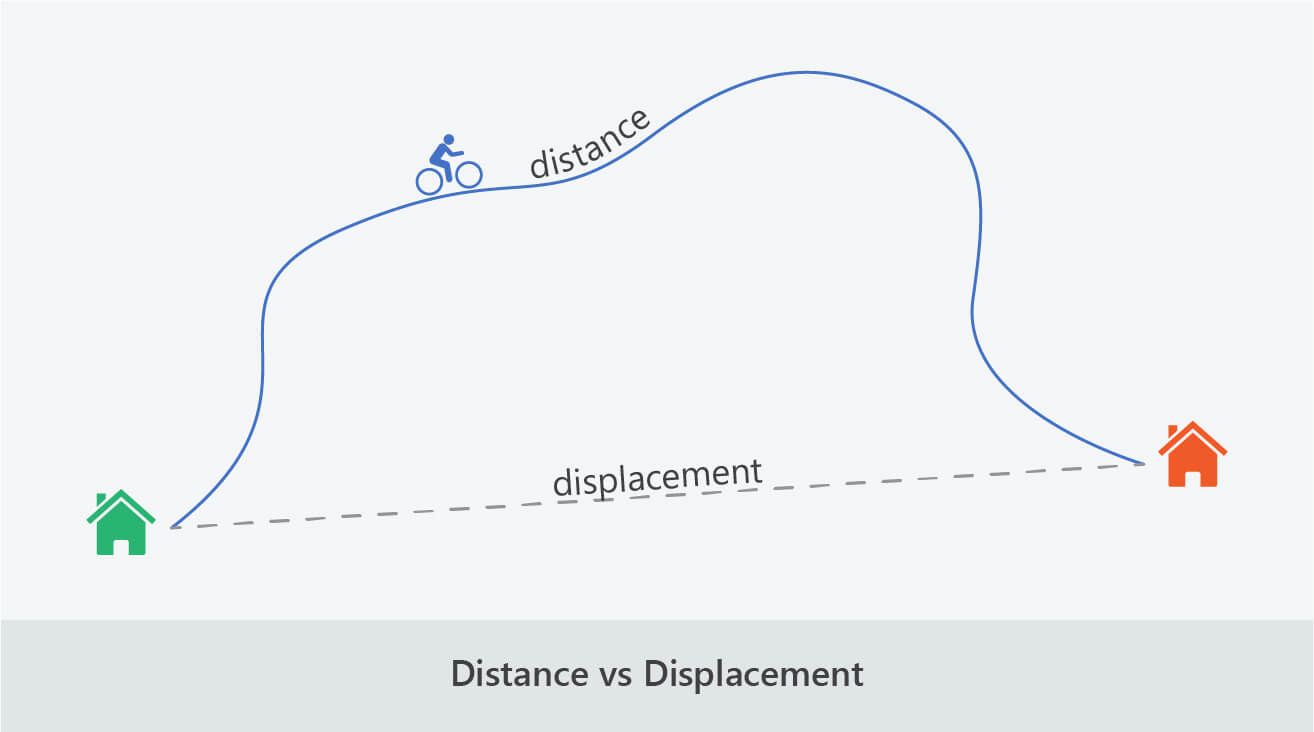1 | Distance and Displacement
Distance and Displacement
- When an object moves between two points, there are two ways of measuring its new position relative to its original position – as distance travelled or as displacement.
- Distance is a measurement of the actual path travelled by an object.
- Displacement is a measurement of how far away an object is from its original position. In other words, if a straight line was drawn between an object’s starting position and its finishing position, that would be its displacement. If an object’s finishing position is the same as its starting position, its displacement will equal zero.
- Unlike distance, displacement also has a direction associated with it.
- For example, if an object’s final position is 100 metres north of its starting position, its displacement is 100 m north.
- Distance is always greater than or equal to displacement, depending on the path travelled by an object.
- If an object moves in a straight line, the distance travelled will be equal to the object’s displacement.
- If an object does not move in a straight line, the distance travelled will be greater than the object’s displacement.

Distance is the actual path travelled by an object.
Displacement is how far away an object is from its original position.

